Noting the omens in the clouds, we spoke of the delays we faced and the terrible troubles our friends faced.

Johnny, perhaps the most adventurous of the four of us, climbed up to sit on the top beams.
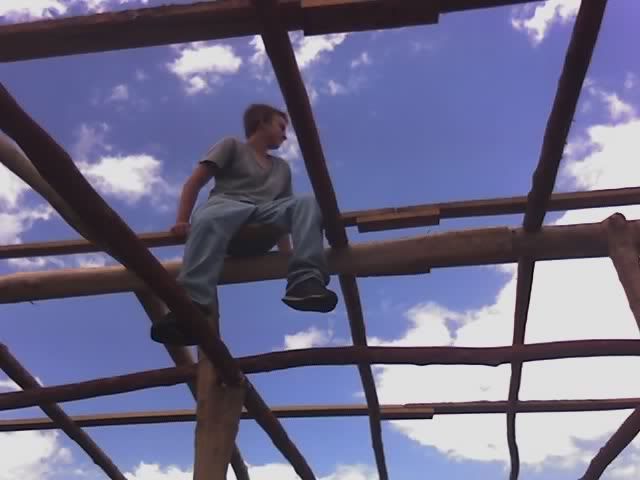
Up there from the top he may have had a better view of the progress. At one point he interrupted our planning and pointed out that "for one thing, it needs a roof".
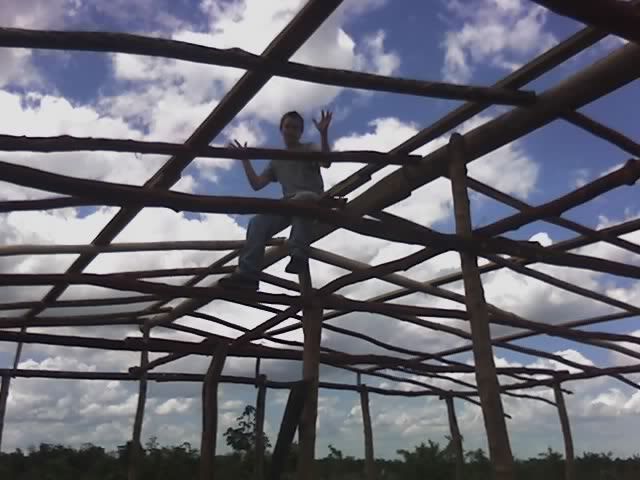
I am sure we already knew that. Obviously we had anticipated this, I'm sure. In any case, it became clear that the next step was to purchase zinc.
A very expensive little pile of zinc galvanized steel roofing sheet.
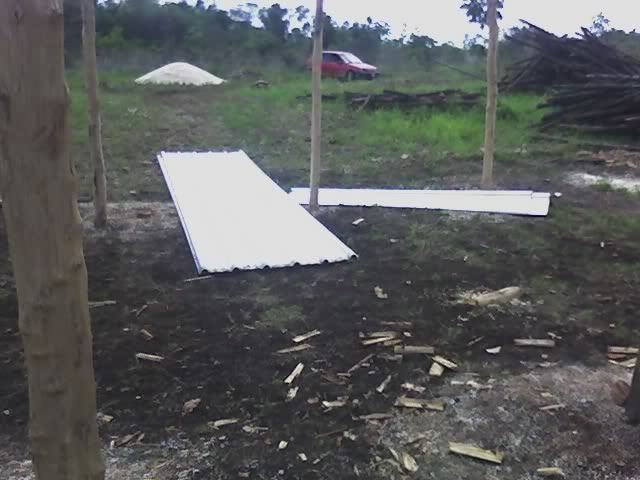
A quick spin around Corozal located a construction supply store on San Andreas Rd as having marginally the best price on zinc roofing sheets. Never the less, the cost of 20 sheets of zinc was substantial. At $1000 it is roughly half the cost of all previous material and labor expenditures.
We had considered using palmetto thatch. That works very well, is cooler, and actually is more durable during a hurricane as air lift forces feather the thatch up rather than lift it off and away from the roof. After Hurricane Dean I was amazed to notice thatched houses had retained their roofs and needed a good raking to put them in order, while nearby zinc roofed houses often had their roofs ripped off.
But all around us are sugar cane fields and each year these are burned prior to cutting for harvest. Doubting the wisdom of purchasing zinc roofing especially for a roof with such a low slope that it will preform much like an airplane wing in a wind storm, I stared at my expensive little pile of metal and wondered if I had made a mistake.
It was either that same day or very shortly thereafter that long black ashes wafted down from on high from some sugar burn so far away we could not even see the smoke. The embers were cold, but, the message was clear, thatch would have been too great a fire risk.
As for the slope of the roof, all here assure me that it makes no difference. However by tradition they always build a very steep roof. A quick study of air lift forces on roofs of various pitches indicates that our roof pitch is about the worst possible one for surviving high winds. The ancestors of the locals probably figured that out, though it is no longer commonly understood. The pitch of this roof was chosen for ease of maintenance and construction reasons not hurricane resistance. Only time will tell if it was a mistake.
In any case it may be possible to mitigate uplift forces on low sloped roofs. Also in time a small hardened concrete storage and hurricane shelter will probably be constructed. I've always kinda wanted a bunker anyway.
The workers wanted to get an early start on roof day. They arrived at 5am, and worked at break neck pace to get half the roof on by around 10am. With half the house now roofed, we hauled the remaining zinc into the shade and I understood. The zinc was getting hot in the sun and the worker up on the roof worked barefoot.
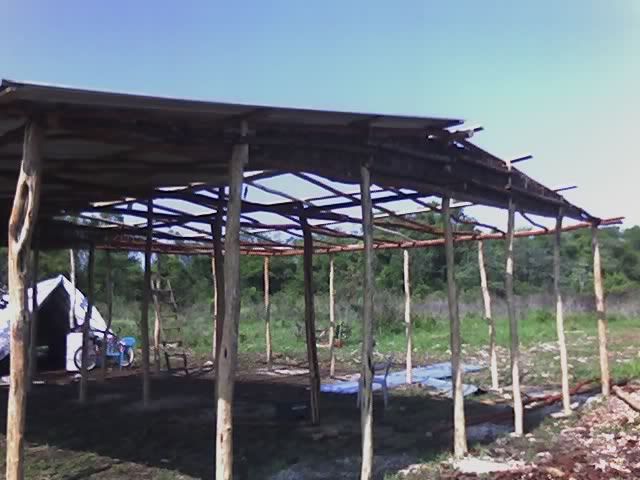
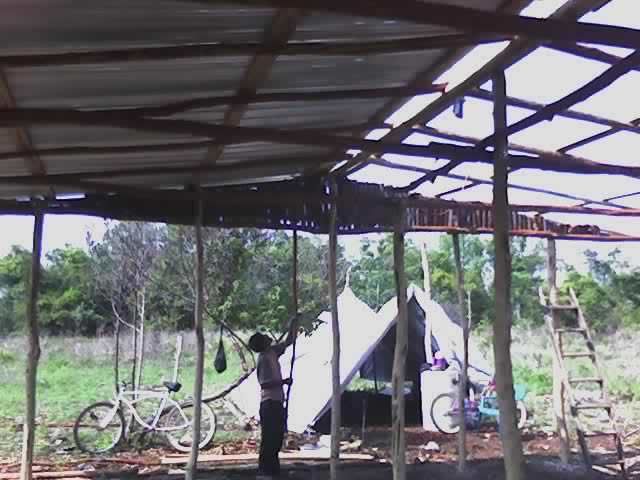
After a longer than usual lunch the zinc had a chance to cool down in the shade and roofing commenced again. By the end of the day, the job was done.
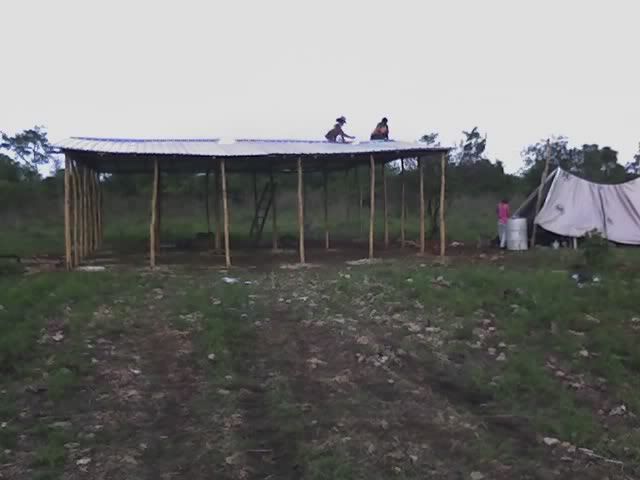
No comments:
Post a Comment